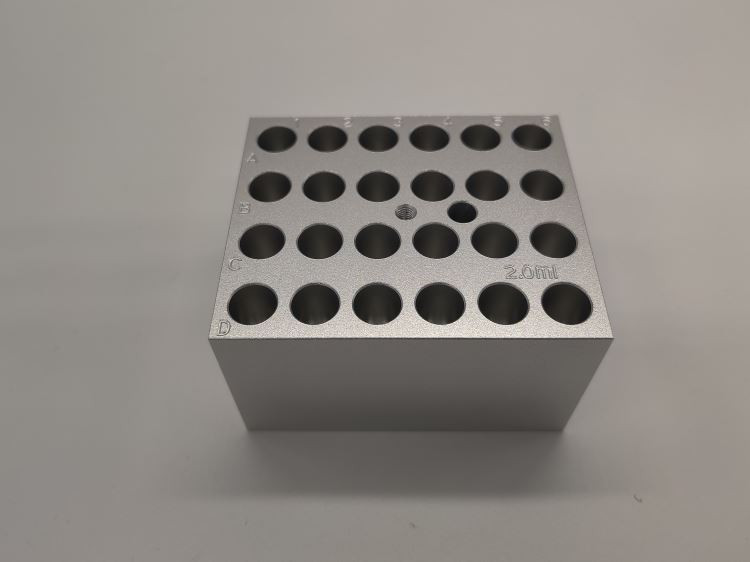For a simple piece of lab equipment, purchasing a dry bath can be a complex and confusing experience.
Most times, the misunderstanding is related to dry bath blocks.
Mistakes happen because stock photos may appear as if the blocks come with the dry bath or on account of subtle differences between dry bath blocks and different lab equipment manufacturing specifications.
Understanding how laboratory dry baths are used and how manufacturers like to market them will eliminate almost all errors and make for happier lab technicians.
What is the purpose of a laboratory dry bath?
Dry baths are used for heating laboratory samples along a continuum that ranges from thawing to incubating, up to boiling, if the dry bath can reach 100C.
A dry bath is basically a box with a cavity surrounded on five sides with a heating element.
A dry bath can have a single cavity, a double cavity or even four spaces.



What goes into each cavity depends on what is to be heated and how that sample is stored.
What is a dry bath block and how does it work?
The dry bath block transfers heat from the walls of the dry bath heating element and delivers uniform and consistent temperature throughout the block.

The holes are milled to match the angle and slope of the vessel or tube because better contact results in more thorough heating.
Since there are a wide variety of vessels to store samples, blocks come in many different configurations.
There are dry bath blocks for 1.5mL conical tubes, 5mL FACS tubes, 0.2mL PCR tubes, PCR plates; blocks for 15 & 50mL tubes, blocks for cuvettes, and more.
This is why dry baths cannot be packaged with a block. Each lab needs the freedom to choose the block(s) that best match their vessels.
Unfortunately, manufacturers like to photograph their dry baths with blocks in them, presumably to make it easier to understand what the item is at a quick glance.
What are other common mistakes made when buying dry bath blocks?
The most common error is purchasing a dry bath block designed to hold only 1.5mL tubes when the lab uses both 1.5mL and 2.0mL tubes.
2.0mL tubes are straight walled and cannot fit a cavity made to accommodate a conical shaped tube.
The second goof is buying blocks from one manufacturer assuming they will fit a different company’s dry bath.
The day iOS and Android agree on a unified platform, lab equipment manufacturers will design their dry baths to be compatible with one another.
When shopping for dry baths and dry bath blocks, make sure the manufacturer names align to avoid returns and costly time loss.
Benchmark Scientific dry bath blocks will not fit a Corning/Labnet dry bath, and the same is true in reverse.
What is something people should know when buying dry bath blocks?
Lab Armor makes lab bead inserts for heating tubes and vessels of unusual shapes or sizes.
These inserts are sized to fit single and double cavity dry baths (two doubles fit a quad cavity) and come filled with aluminum beads.
The inserts come in a variety of sharp colors which is useful for segregating bench work by personnel or application.

How does Stellar Scientific make it easier to buy dry baths and blocks?
Stellar Scientific is updating stock photos to show dry baths with empty cavities, so it is clear no blocks are included (as the images above show).
Dry bath blocks are listed separately under product accessories and divided by manufacturer and dry bath size.

In the product description for each dry bath is a link to its matching dry bath block collection.
Purchasing a dry bath and blocks does not have to be challenging!
With Stellar Scientific we make it easy to get it right the first time.


